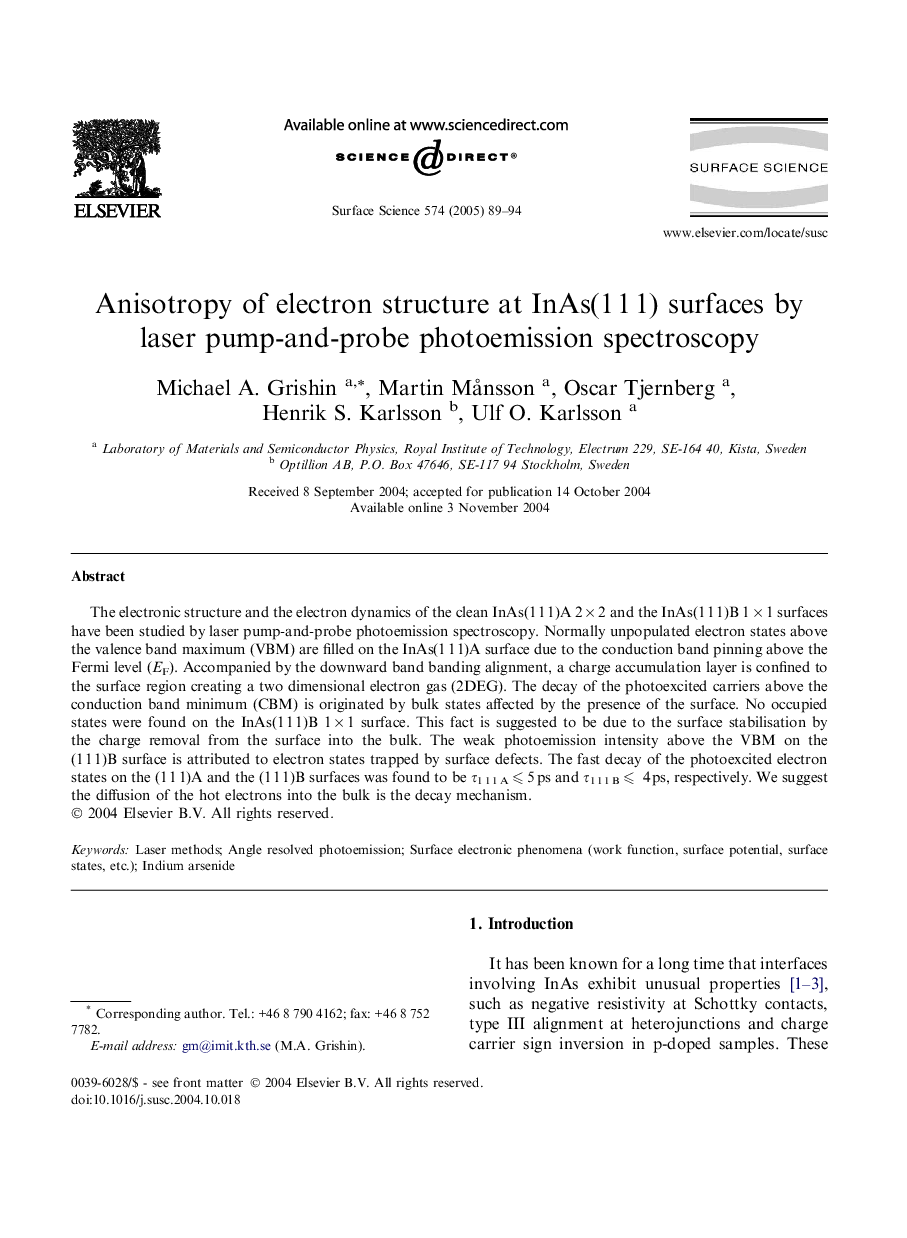| Article ID | Journal | Published Year | Pages | File Type |
|---|---|---|---|---|
| 9594924 | Surface Science | 2005 | 6 Pages |
Abstract
The electronic structure and the electron dynamics of the clean InAs(1 1 1)A 2 Ã 2 and the InAs(1 1 1)B 1 Ã 1 surfaces have been studied by laser pump-and-probe photoemission spectroscopy. Normally unpopulated electron states above the valence band maximum (VBM) are filled on the InAs(1 1 1)A surface due to the conduction band pinning above the Fermi level (EF). Accompanied by the downward band banding alignment, a charge accumulation layer is confined to the surface region creating a two dimensional electron gas (2DEG). The decay of the photoexcited carriers above the conduction band minimum (CBM) is originated by bulk states affected by the presence of the surface. No occupied states were found on the InAs(1 1 1)B 1 Ã 1 surface. This fact is suggested to be due to the surface stabilisation by the charge removal from the surface into the bulk. The weak photoemission intensity above the VBM on the (1 1 1)B surface is attributed to electron states trapped by surface defects. The fast decay of the photoexcited electron states on the (1 1 1)A and the (1 1 1)B surfaces was found to be Ï1 1 1 A ⩽ 5 ps and Ï1 1 1 B ⩽ 4 ps, respectively. We suggest the diffusion of the hot electrons into the bulk is the decay mechanism.
Keywords
Related Topics
Physical Sciences and Engineering
Chemistry
Physical and Theoretical Chemistry
Authors
Michael A. Grishin, Martin MÃ¥nsson, Oscar Tjernberg, Henrik S. Karlsson, Ulf O. Karlsson,
